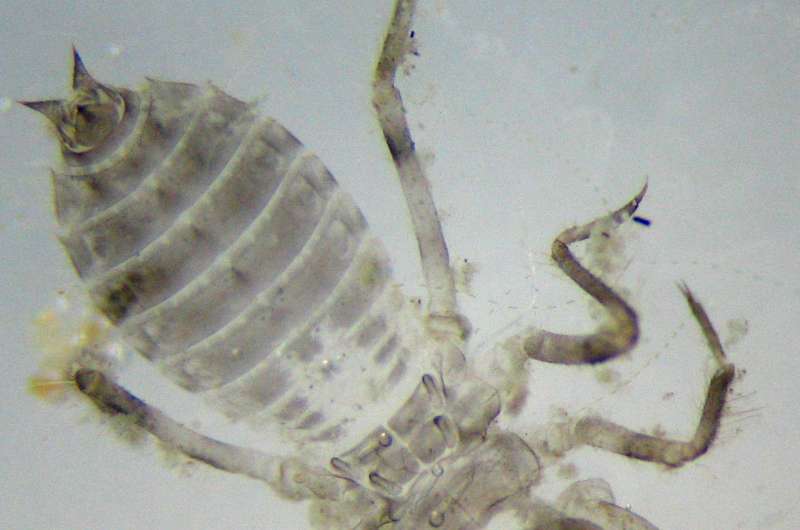How dragonfly larvae could inspire more effective artificial heart valves

The way dragonfly larvae control the water jets they use to move and breathe could have a range of engineering and medical applications, according to new research.
Published today in Bioinspiration and Biomimetics, the study from the California Institute of Technology (Caltech), examined how Anisopteran dragonfly larvae control and adjust the repetitive water jets flowing through their posterior openings.
The larvae have active tri-leaflet valves, with independent control over each leaflet. The researchers discovered this feature enables the larvae to change both the size and asymmetry of the jet exit.
Senior author Professor Morteza Gharib said: "The way the dragonfly larvae use their unique adaptation to control the jet direction has previously been overlooked.
"The asymmetry control by the larvae is an intriguing jet vectoring mechanism, different from those of squids or salps that simply point their funnels or siphons in a desired direction. The jet directions, distinguished for respiration and propulsion, have implications for their biological purposes.
"Coupled with the changing valve size, the larvae's diagonal respiratory jet appears to aid the inhalation process and prevent re-inhaling the exhaled fluid. The straight propulsive jetting, meanwhile, appears to help with the production and utilisation of the thrust."
Lead author Dr. Chris Roh said: "As well as providing a greater insight into the dragonfly larvae, our findings have broader implications, both in the engineering and biomedical spheres. The mechanisms we've identified can be applied to various engineering fields that use jet control.
"For example, synthetic jets are gaining popularity in areas like flow control, propulsion and heat transfer. The dragonfly's dynamic asymmetry control at the orifice could inspire a new way to adjust the jet directionality in synthetic jet systems. If the asymmetric orifice control is integrated into synthetic jets, the systems may be able to achieve a more diverse flow profile."
The larvae's leaflet valves could also have significant applications in medical devices where flow control is a crucial element.
Professor Gharib explained: "The jet vectoring we observed could also be applied in the development of prosthetic heart valves. The current tri-leaflet prosthetic heart valves suffer from prosthesis-patient mismatch, which is caused by the unnatural blood flow that over time can cause blood clots or infection in the walls of the aortic trunk.
"In this regard, a valve asymmetry could prove useful as an adjustable parameter, which can direct the prosthetic's blood flow to match individual patients' natural blood flow."
More information: Chris Roh et al. Asymmetry in the jet opening: underwater jet vectoring mechanism by dragonfly larvae, Bioinspiration & Biomimetics (2018). DOI: 10.1088/1748-3190/aac25a
Journal information: Bioinspiration and Biomimetics
Provided by Institute of Physics



















